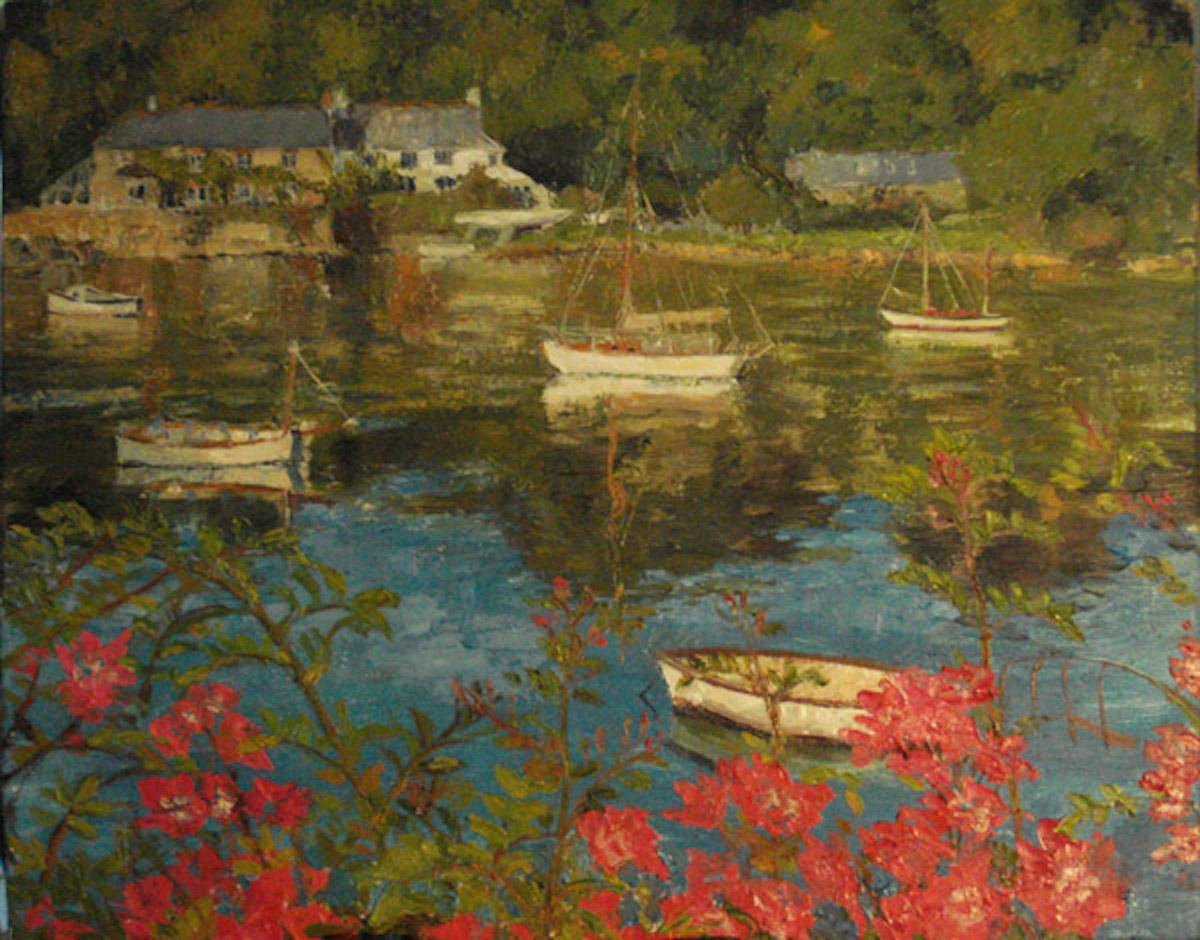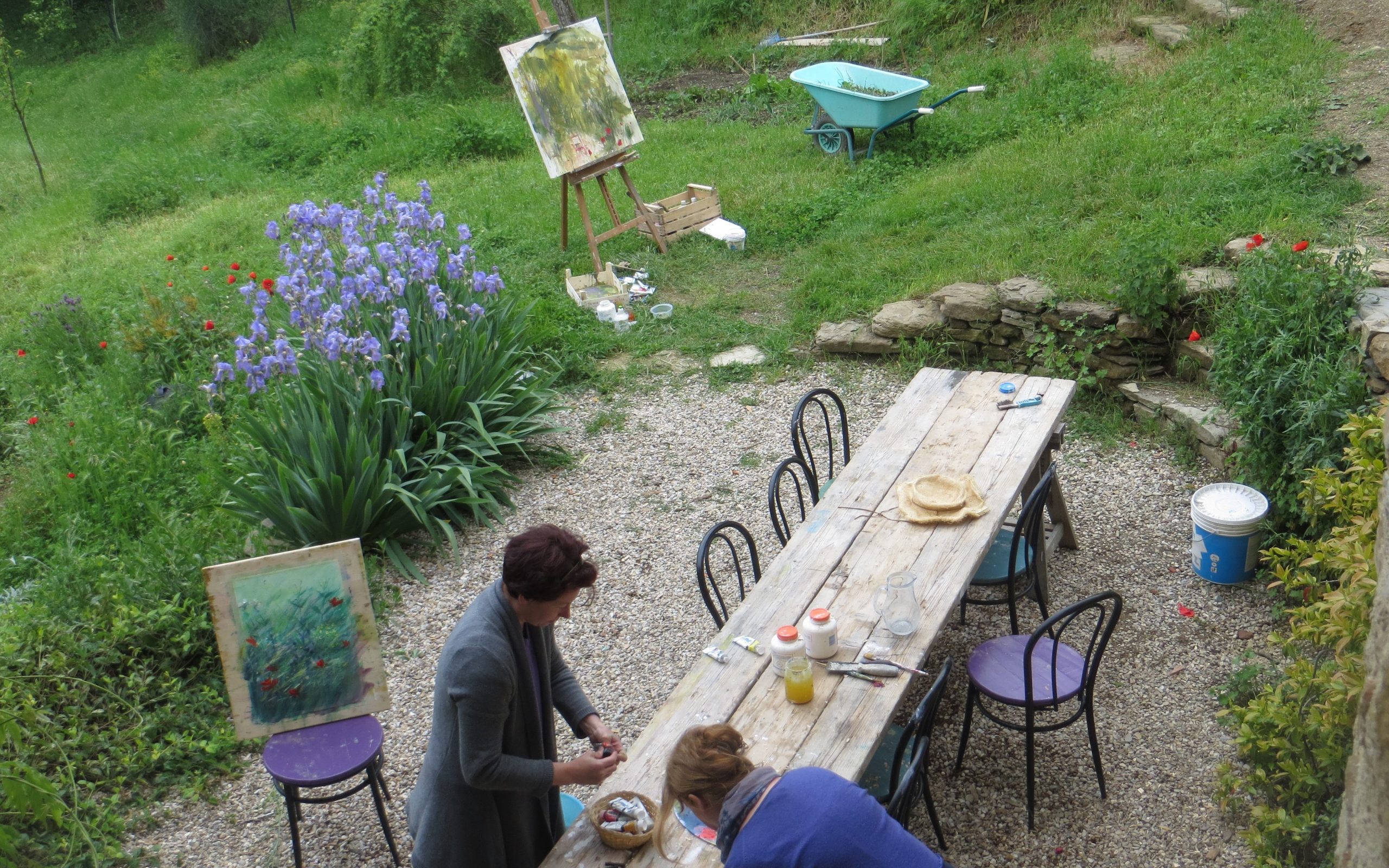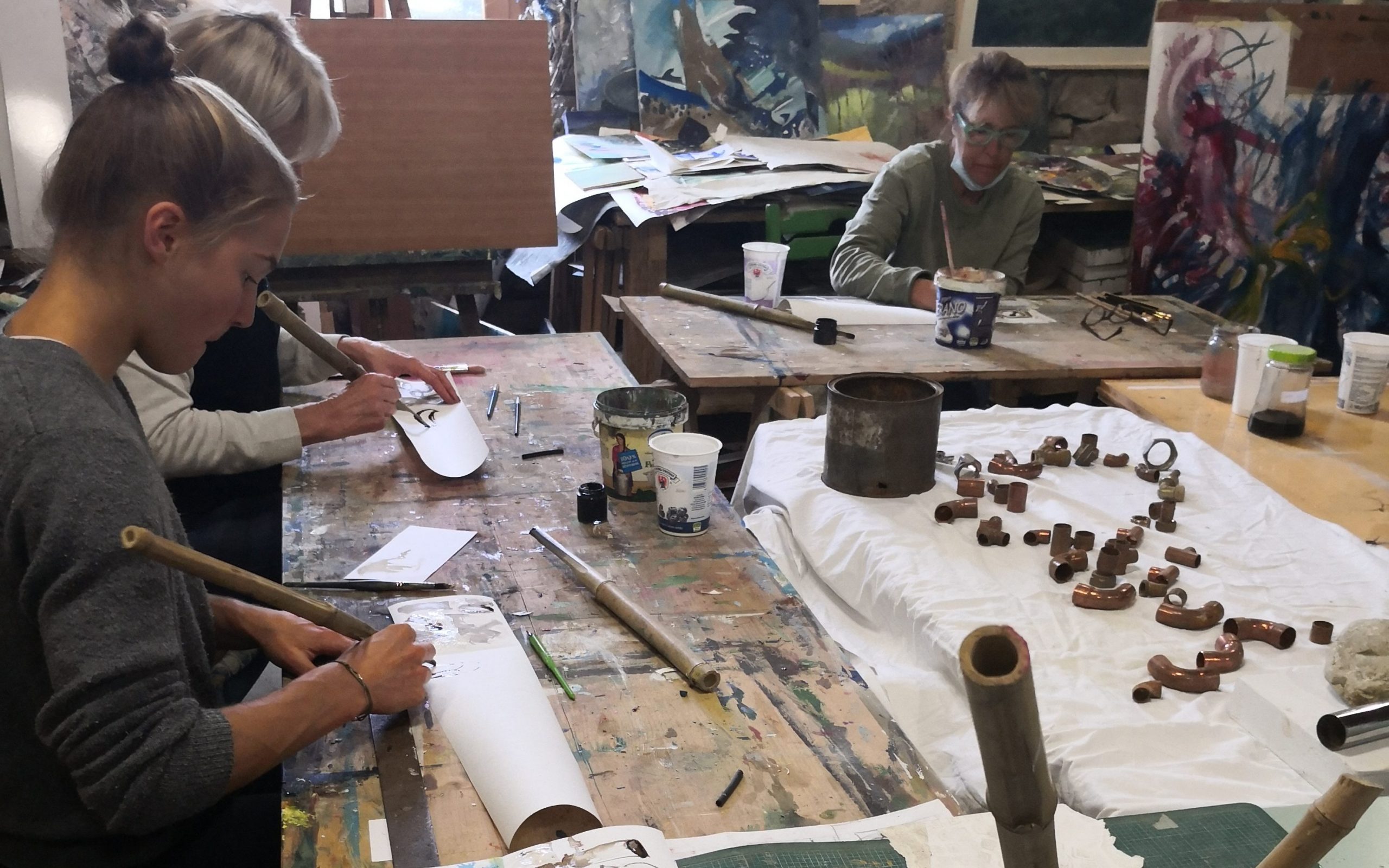
Art at Rimondato
Lucy Toop and her family open their home to a varied range of artists, providing professional residencies and workshops for all levels.
Lucy has worked, taught, and exhibited throughout England and Italy. She is currently exhibiting at Imago Galleria d’ Arte in Perugia. Read more about Lucy Toop on her website.
Art Opportunities

Residencies
The residential artists focus on their own practice, collaborating with Lucy as they see fit. The residency culminates in a local exhibition.
Eligible Participants: Professional or semi-professional artists
Duration: One month
Accommodation: Independent working and living space at Rimondato. 1-2 residents at a time.
Timing: By appointment. To coordinate, please email Lucy directly: lucywillow27@hotmail.com with “Art Residency” in the subject line. Please share a few details about yourself.

Workshops
We invite creative individuals to develop their painting and drawing techniques in-depth through short-term onsite lessons with Lucy Toop.
Eligible Participants: All levels welcome
Duration: One to five days, depending on the student’s level & interest
Accommodation: No onsite accommodation, students return home daily
Timing: See Calendar for details
Interested in learning more or private workshops? Email Lucy directly lucywillow27@hotmail.com with “Art Workshop” in the subject line.
About the Artist: Lucy Toop
Rimondato is Lucy’s home and studio. Explore more of Lucy’s work on her website.
Lucy is currently exhibiting a selection of work at Imago Galleria d’Arte in Perugia, Italy. The gallery’s owner, Stefania Marcagnani, writes about Lucy Toop:
“To see a world in a grain of sand and a sky in a wild flower, to hold infinity in the palm of your hand and eternity in an hour”
– William Blake, Songs of Innocence and Experience
“For the beautiful is nothing but the beginning of the terrible, which we still endure, and so much admire, because it disdains, quietly, to destroy us.” – Rainer Maria Rilke, Duino Elegies I, 1911
Toop has shaped her existence around her artistic research, which has determined precise life choices. After the MA in Fine Art Sculpture and a stay in the wilds of Cornwall, she decides to move to Umbria together with her architect husband. In a house located in an impervious and solitary place, but in an area rich in traditions, art and culture, she establishes an emotional connection with her surroundings, in an almost pantheistic communion with nature. This existential balance is perfectly reflected in her works, which give us back landscapes, glimpses, combinations of light and colour filtered by a deep inner investigation.
Lucy Toop’s compositions, even the most descriptive ones, never tend towards a rigorous and objective representation, but are the immediate response to a stimulus, to the call of beauty, which manifests itself in the most unexpected situations and which appears imperceptible to the layman’s gaze. The artist dwells on a portion of reality, manages to seize the moment in which the light glimpses through the leaves and creates a particular state of grace, perceives its aesthetic dimension, establishing an almost emotional intimacy with the subject and determining an immediate but balanced response between the impetuousness of the gesture and the skill of the pictorial technique. Toop manages to enhance the element in the foreground, a solitary flower that peeps out in a wild meadow and covers it with the intensity of the oil pigment, adding body and substance and subtracting where necessary, to avoid unnecessary redundancies.
The creative genesis of these paintings, where the natural fact is more evident, for a rebellious and restless spirit like Lucy’s, imposes an almost opposite reaction, an obsessive urge to free oneself from the technical and chromatic constraints that a language closer to the truth requires. The process is not always instantaneous and can be fraught with obstacles, but it is the ontological principle of her expressive figure and a precise declaration of poetics.
The creations of this cycle alternate with the other without any chronological sequence but are the result of a more complex inner analysis. Her research seems to suggest the concept that every AESTHETIC experience is also an ESTATIC experience that accompanies the individual towards a higher dimension, beyond the senses, and when it is deep, intimate and absolute it is always also an experience of the SACRED.
As Rilke reminds us, beauty sometimes leads us to the edge of the abyss, and for this reason, seeking it and returning it can involve internal passages of great suffering followed by a creative ecstasy. In this series of works, the less controlled pictorial gesture dissimulates any traditional perspective rule and is shattered on the canvas with beams of colour and light similar to magmatic explosions or swirling dances that arise from the depths of being. More than glimpses of landscapes, they are interior landscapes, a mapping of the soul that is sculpted on the surface, almost totally freeing itself from the descriptive function and overwhelming every form. A sky could be glimpsed, the tumultuous sensation of a whirlpool of water, the lava of a volcano, the silhouette of a tree. Abandon MIMESIS, seek interiority in exteriority, traveling in the opposite direction, where the emotion aroused by a landscape lead to the expression of an inner truth. The great EXPRESSIONIST lesson which is the basis of many contemporary languages and which in the case of Lucy Toop takes on an even more absolute connotation. Contaminating the gaze with what is still beautiful and harmonious seems to be the profound message that the artist wants to convey to us, because beauty does not become manifest if there is no one who sees it. Lucy’s painting gives us the feeling of being surrounded by a much bigger reality that requires to be listened to with all the dimensions of one’s being, with reason, vision, perception and feeling.